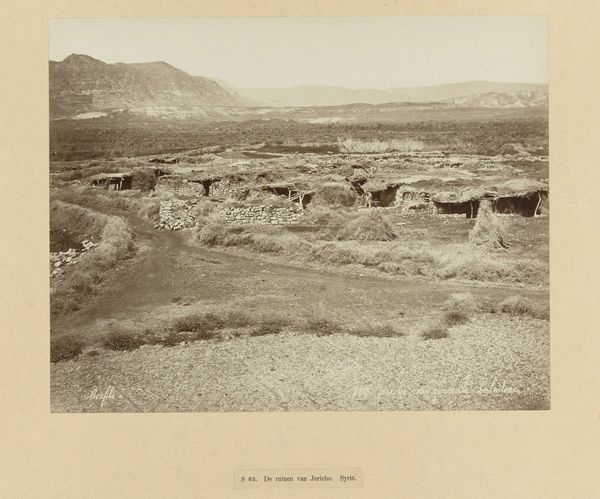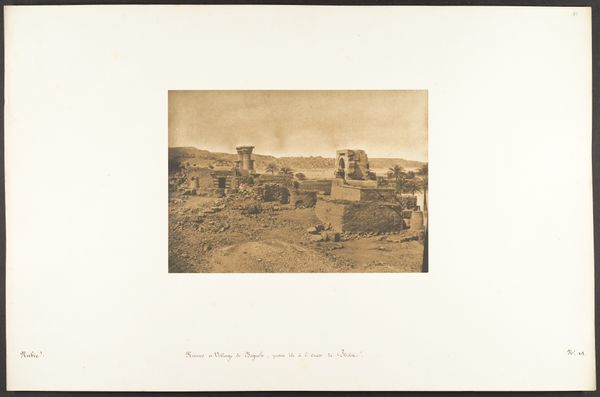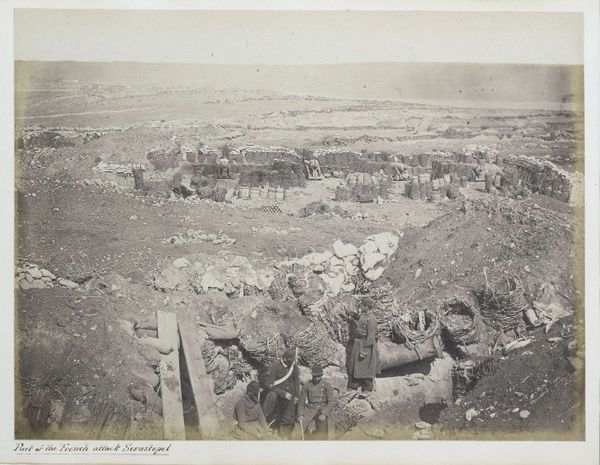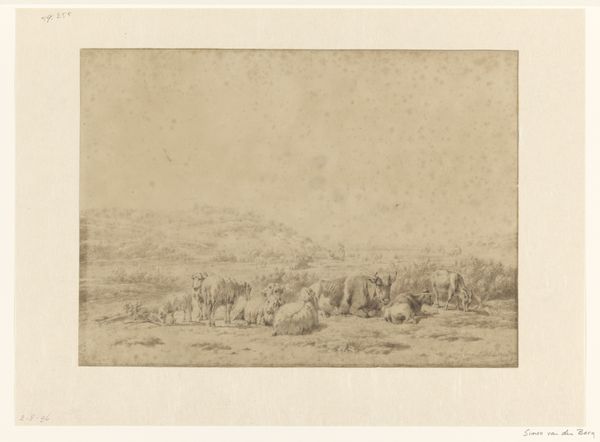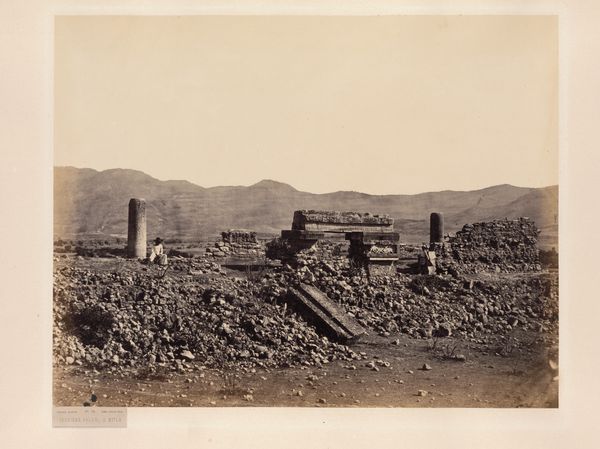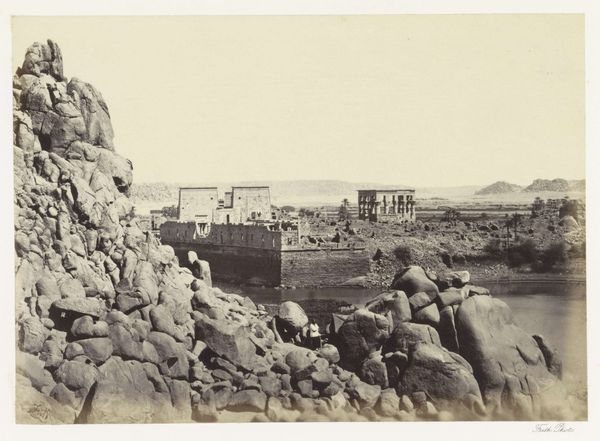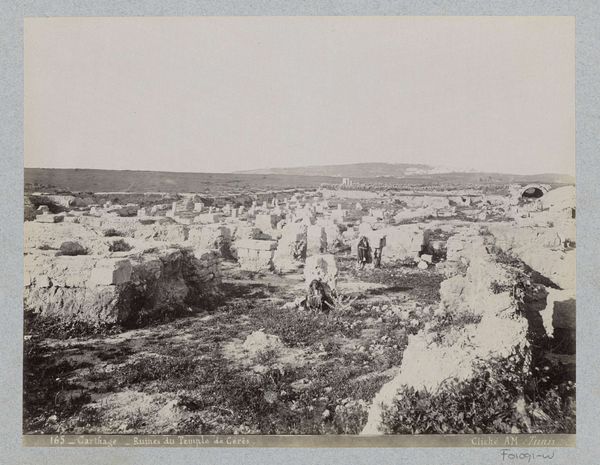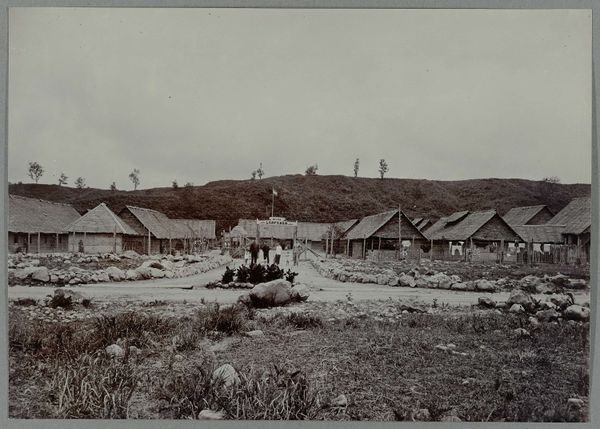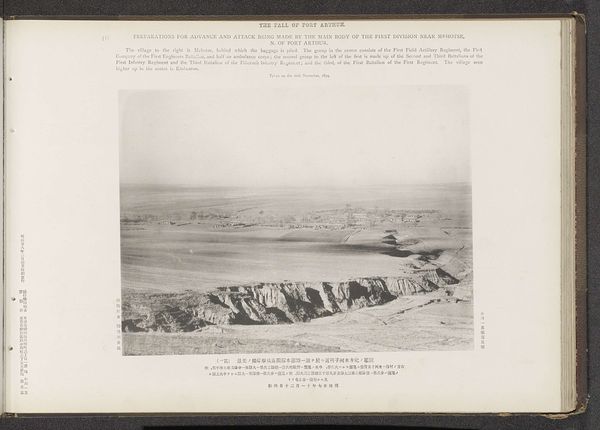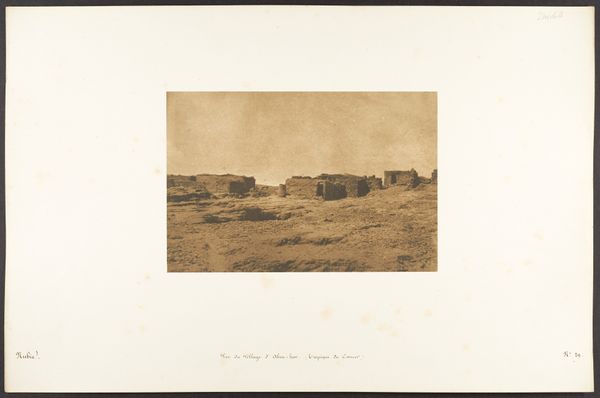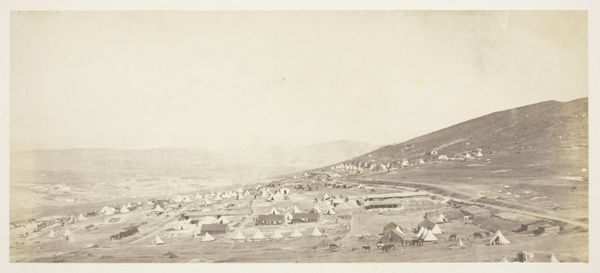
photography, albumen-print
#
landscape
#
photography
#
historical photography
#
old-timey
#
ancient-mediterranean
#
19th century
#
albumen-print
Dimensions: height 207 mm, width 253 mm, height 469 mm, width 558 mm
Copyright: Rijks Museum: Open Domain
Curator: This photograph, "Ruins of Ephesus," taken sometime between 1870 and 1890, presents a wide view of an archaeological site in what was then known as Asia Minor. The artist is known only as Rubellin. It's an albumen print. Editor: There’s a stark emptiness about it, isn’t there? A kind of desolate beauty. The strong horizontal lines really emphasize the ruinous state. You have the low horizon line and then these broken architectural remains. Curator: Precisely. The composition is deliberately structured to guide the eye. Note how the photographer uses the crumbling walls and scattered stones in the foreground to create a sense of depth. The light is crucial here, evenly distributed to show texture but casting a kind of shadow. Editor: Yes, and considering it's Ephesus, a site steeped in history and trade, the desolation seems especially poignant. One can imagine the hustle and bustle that once filled this place now reduced to rubble. What political forces even contributed to the location's downturn at this time? Curator: It speaks to broader narratives of empire and decline, the rise and fall of civilizations which were of course the political obsession during that late 19th century time period when travel photography was reaching a new zenith and archeological tourism was booming among the Western elite. This also tells us something about what was deemed aesthetically pleasing. Editor: Indeed. Beyond its historical implications, I’m also struck by the technical artistry. Capturing such detail with what was, by today's standards, relatively primitive technology speaks volumes about Rubellin’s skill as a photographer, creating this somber but still visually pleasing mood with careful arrangement of form. Curator: Yes, the play of light and shadow is particularly impressive given the limitations of the medium, the texture and geometry working together beautifully, yet this image prompts us to consider how we even come to represent sites of such importance. Is it respectful? A type of cultural exploitation even? Editor: Food for thought indeed. Well, whatever the complexities involved, viewing these ruins does spark contemplation of history. I appreciate seeing this image in a whole new light today. Curator: And I, too, see fresh dimensions through our discussion about the play of light, form and the representation of ancient structures that have shaped our perceptions today.
Comments
No comments
Be the first to comment and join the conversation on the ultimate creative platform.
